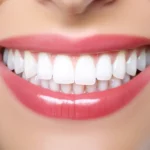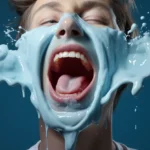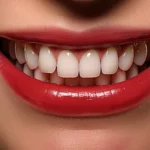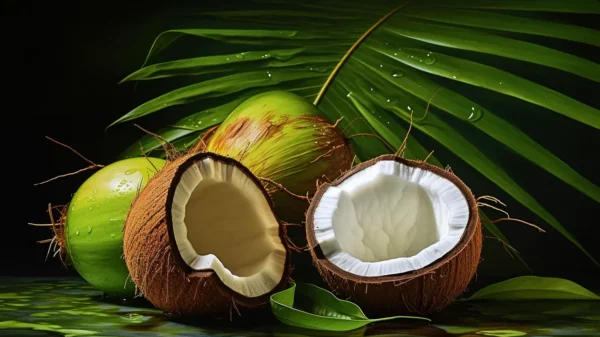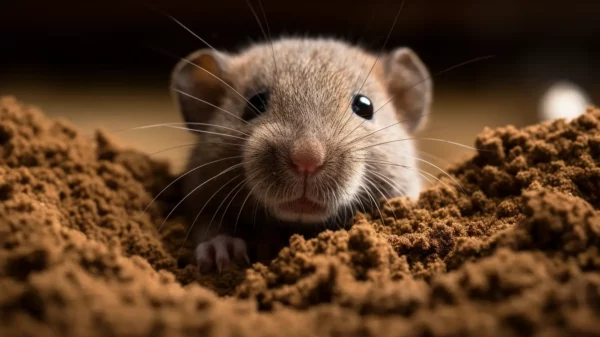Maintaining good oral hygiene is crucial for overall health and well-being. Brushing our teeth regularly is a fundamental aspect of oral care, helping to remove plaque, prevent cavities, and freshen breath. However, there may be instances when we find ourselves without a toothbrush. Whether you’re traveling, camping, or facing an emergency situation, knowing how to effectively clean your teeth without a toothbrush can be invaluable.
In this comprehensive guide, we will explore alternative oral hygiene methods and provide you with a range of techniques to brush your teeth without a toothbrush. We will discuss the importance of oral hygiene, the benefits and limitations of brushing without a toothbrush, and the preparation required for effective brushing without a toothbrush.
Brushing without a toothbrush may seem unconventional, but it can be a practical and effective solution in certain situations. By learning and implementing these alternative methods, you can maintain good oral health and hygiene wherever you are, even without access to a toothbrush. So, let’s dive into the world of brushing without a toothbrush and discover the various techniques and tools that can help you keep your teeth clean and healthy.
Preparation for Brushing Without a Toothbrush
Before delving into the techniques of brushing without a toothbrush, it is essential to gather the necessary tools and ingredients. Having these items ready will ensure that you can effectively clean your teeth even without a toothbrush.
Gather Necessary Tools and Ingredients
- Toothpaste Alternatives: In the absence of a toothbrush, you can explore toothpaste alternatives that can help maintain oral hygiene. Baking soda, for example, is a common ingredient used for toothpaste alternatives due to its ability to remove plaque and neutralize acidity in the mouth. Other options include salt, which has antibacterial properties, and even crushed mint leaves for a refreshing effect. It is important to choose alternatives that are safe for oral use and do not damage tooth enamel.
- Mouthwash or Homemade Rinse: Mouthwash or a homemade rinse can be a valuable addition to your oral care routine when a toothbrush is not available. Mouthwash helps kill bacteria, freshen breath, and provide an extra level of cleanliness to the mouth. If you don’t have access to commercial mouthwash, you can create a homemade rinse using ingredients such as warm water, salt, hydrogen peroxide, or even herbal infusions like sage or peppermint.
- Natural Cleaning Agents: Nature offers several natural cleaning agents that can be used for oral hygiene. For example, neem twigs have been traditionally used in certain cultures as a natural toothbrush due to their antimicrobial properties. Another option is using aloe vera gel, which has soothing properties and can help maintain oral health. These natural cleaning agents can be effective alternatives when a toothbrush is not available.
- Oral Hygiene Tools: While a toothbrush may not be accessible, there are various tools that can assist in cleaning your teeth effectively. Finger brushes or finger cots, which are small rubber or silicone devices that fit over your finger, can be used to mimic the brushing motion and provide a gentle cleaning action. Interdental brushes or dental picks can help clean between teeth and remove food particles. These tools, when combined with the right techniques, can contribute to maintaining oral hygiene without a toothbrush.
Choose the Right Location
The location where you brush without a toothbrush can also play a role in the effectiveness of your oral hygiene routine. If you are at home, you have the advantage of a comfortable and familiar environment. However, if you are traveling or facing an emergency situation, finding a suitable location may require a bit more creativity. It is important to find a clean and well-lit area where you can comfortably perform your oral hygiene routine. This could be a bathroom, a private outdoor space, or any area that allows you to have access to water and the necessary tools.
By gathering the necessary tools and ingredients and choosing the right location, you will be well-prepared to maintain good oral hygiene even without a toothbrush. These preparations will ensure that you can effectively clean your teeth and keep your mouth fresh and healthy. So, let’s move on to the next section and explore the techniques for brushing without a toothbrush.
Techniques for Brushing Without a Toothbrush
Now that we are equipped with the necessary tools and knowledge, let’s explore the different techniques for brushing without a toothbrush. These techniques may seem unconventional at first, but they can be effective in maintaining oral hygiene when a toothbrush is not available.
Finger Brushing Method
One of the simplest and most accessible techniques for brushing without a toothbrush is using your finger as a brush. This method allows you to mimic the brushing motion and clean your teeth effectively. To begin, make sure your hands are clean and wash your finger thoroughly. Then, apply a small amount of toothpaste alternative, such as baking soda or salt, to your finger. Gently brush your teeth using circular motions, focusing on all surfaces of your teeth, including the front, back, and chewing surfaces. Pay extra attention to areas where plaque tends to accumulate, such as around the gumline.
While finger brushing can be effective, it does have its limitations. Unlike a toothbrush, your finger may not reach certain areas of your mouth, especially the back teeth. Additionally, finger brushing may not provide the same level of plaque removal as a toothbrush. However, in situations where a toothbrush is unavailable, finger brushing can still provide a temporary solution for maintaining oral hygiene.
Chew Stick or Miswak
A chew stick, also known as a miswak, is a traditional oral hygiene tool that has been used for centuries in many cultures. It is a natural twig, typically from the Salvadora persica tree, with medicinal properties that can help clean and protect teeth. To use a chew stick, choose a fresh twig and remove the outer bark to expose the inner fibers. Chew on one end until the fibers separate into bristles, similar to the bristles of a toothbrush. Then, use the chew stick like a toothbrush, gently brushing your teeth and gums. The natural antimicrobial properties of the miswak can help fight bacteria and freshen breath.
Chew sticks offer several advantages in the absence of a toothbrush. They are readily available, inexpensive, and require no additional ingredients. Additionally, they are eco-friendly and do not contribute to plastic waste. However, it is important to note that chew sticks may have a different texture and taste compared to a toothbrush, which may take some getting used to. Furthermore, chew sticks should be replaced regularly to ensure optimal cleanliness and effectiveness.
Cloth or Gauze Method
Another technique for brushing without a toothbrush is using a clean cloth or gauze. This method can be effective in removing plaque and debris from the teeth and gums. Start by dampening a clean cloth or a piece of gauze with water or a mouthwash solution. Wrap the cloth or gauze around your index or middle finger, creating a small pad. Apply a small amount of toothpaste alternative to the pad, and gently rub it against your teeth in a circular motion. Make sure to cover all tooth surfaces, including the front, back, and chewing surfaces. Pay close attention to the gumline and areas between the teeth.
The cloth or gauze method allows you to have more control over the pressure applied to your teeth, ensuring a gentle yet effective cleaning. However, it is important to use a clean cloth or gauze pad for each brushing session to maintain hygiene and prevent the transfer of bacteria. Additionally, this method may not be as convenient as using a toothbrush, especially in situations where water or mouthwash is not readily available.
Other Innovative Methods
In addition to the traditional finger brushing, chew stick, and cloth or gauze methods, there are other innovative techniques for brushing without a toothbrush. These methods may not be as widely known or commonly practiced but can still provide alternative options for maintaining oral hygiene.
Oil Pulling
Oil pulling is an ancient Ayurvedic technique that involves swishing oil around your mouth to remove toxins and improve oral health. To perform oil pulling, take a tablespoon of edible oil, such as coconut oil or sesame oil, and swish it around your mouth for 10 to 20 minutes. Make sure to move the oil around all areas of your mouth, including between your teeth and along the gumline. Afterward, spit out the oil into a trash bin and rinse your mouth thoroughly with water. Oil pulling is believed to help remove bacteria and promote gum health, but it should not replace regular brushing and flossing.
Baking Soda and Salt Method
Baking soda and salt can be combined to create a natural toothpaste alternative for brushing without a toothbrush. Mix equal parts of baking soda and salt in a small bowl, then dip a dampened finger or cloth into the mixture. Gently brush your teeth using circular motions, ensuring that the mixture reaches all tooth surfaces. Baking soda helps remove stains and neutralize acidity in the mouth, while salt acts as a natural antimicrobial agent. However, it is important to use this method sparingly, as excessive use of baking soda and salt may erode tooth enamel over time.
Herbal Tooth Powder
Herbal tooth powders offer a natural alternative for brushing without a toothbrush. These powders typically contain a blend of herbs, spices, and minerals that promote oral health. To use a herbal tooth powder, dampen your finger or a clean cloth, dip it into the powder, and gently brush your teeth. The herbal ingredients provide antimicrobial properties and can help freshen breath. However, it is important to choose a reputable brand or consult with a healthcare professional to ensure the safety and effectiveness of the herbal tooth powder.
By exploring these various techniques, you can find the method that suits your preference and situation when a toothbrush is not available. Remember, while these alternative methods can be effective in maintaining oral hygiene, they should not replace regular brushing and flossing with a toothbrush. Let’s move on to the next section, where we will discuss maintaining oral hygiene without a toothbrush.
Maintaining Oral Hygiene Without a Toothbrush
Brushing is just one aspect of maintaining good oral hygiene. In this section, we will explore additional practices that can help you keep your mouth clean and healthy even without a toothbrush. These practices focus on different aspects of oral hygiene, including rinsing and swishing, tongue cleaning, interdental cleaning, and natural remedies for fresh breath.
Importance of Regular Rinsing and Swishing
Rinsing and swishing play an important role in maintaining oral hygiene, especially when a toothbrush is not available. They help to remove food particles, reduce plaque buildup, and freshen breath. One of the most common ways to rinse and swish is by using a mouthwash. While commercial mouthwashes are readily available, you can also create a homemade oral rinse using ingredients that are easily accessible. For example, a simple saltwater rinse can help kill bacteria and soothe gum inflammation. To make a saltwater rinse, dissolve half a teaspoon of salt in a glass of warm water, mix well, and use it as a mouthwash. Another option is hydrogen peroxide mixed with water, which can help kill bacteria and whiten teeth. It is important to remember to never swallow mouthwash or oral rinse solutions.
Tongue Cleaning Techniques
Cleaning your tongue is an essential part of maintaining good oral hygiene. The tongue harbors bacteria, food particles, and dead cells, which can contribute to bad breath and oral health issues. While a toothbrush is commonly used to clean the tongue, there are alternative tools and techniques that can be employed when a toothbrush is not available. One such tool is a tongue scraper, a small device specifically designed for cleaning the tongue. It can be gently scraped from the back to the front to remove the buildup. If a tongue scraper is not accessible, a spoon or the back of a toothbrush can be used to clean the tongue surface. Simply hold the spoon or toothbrush handle firmly and gently scrape from the back to the front of the tongue, repeating the process until the entire tongue is cleaned.
Interdental Cleaning Options
Interdental cleaning is important for removing plaque and food particles from the spaces between your teeth, where a toothbrush cannot reach. Flossing is a common method for interdental cleaning, but there are alternative options when floss or a toothbrush is not available. One alternative is to use interdental brushes, also known as interproximal brushes, which are small brushes specifically designed to clean between teeth. They come in various sizes to accommodate different interdental spaces. Another option is dental picks, which are small plastic or wooden tools with a pointed end for removing debris between teeth. These interdental cleaning options can be effective in maintaining oral hygiene when a toothbrush or floss is not accessible.
Natural Remedies for Fresh Breath
Fresh breath is an important aspect of oral hygiene. When a toothbrush is not available, there are natural remedies that can help freshen your breath. Herbs and spices, such as cloves, mint, or parsley, have been traditionally used to combat bad breath. Chewing on a small sprig of fresh parsley or mint leaves can help neutralize odors and provide a temporary freshness. Another option is to create a homemade breath freshener by mixing essential oils, like peppermint or spearmint, with water and using it as a mouth spray. These natural remedies can help mask odors and provide a refreshing sensation when brushing without a toothbrush.
By incorporating these additional practices into your oral hygiene routine, you can maintain a clean and healthy mouth even without a toothbrush. Regular rinsing and swishing, proper tongue cleaning, interdental cleaning, and natural remedies for fresh breath all contribute to overall oral health. However, it is important to note that these practices should not replace regular brushing and flossing with a toothbrush. Let’s move on to the next section, where we will discuss additional tips and considerations for brushing without a toothbrush.
Additional Tips and Considerations
As we have explored various techniques and methods for brushing without a toothbrush, there are additional tips and considerations to keep in mind. These tips will help you navigate different situations and ensure that you can maintain good oral hygiene even without a toothbrush.
Frequency and Duration of Brushing Without a Toothbrush
While brushing with a toothbrush is typically recommended at least twice a day, the frequency and duration of brushing without a toothbrush may vary. It is important to adapt your oral hygiene routine based on the availability of alternative methods and the circumstances you find yourself in. When a toothbrush is not available, aim to clean your teeth using the techniques discussed in this guide at least once a day. This will help remove plaque and food particles, reducing the risk of dental issues. Additionally, the duration of each brushing session may be slightly longer compared to using a toothbrush to ensure thorough cleaning.
Emergency Situations and Traveling
Brushing without a toothbrush becomes particularly relevant in emergency situations or while traveling, where access to dental facilities and oral care products may be limited. It is crucial to be prepared in such situations by carrying essential oral hygiene tools and supplies. Portable alternatives like chew sticks, finger brushes, or travel-sized interdental brushes can be included in your emergency or travel kit. Additionally, having travel-sized toothpaste alternatives and mouthwash can ensure you have the necessary supplies to maintain oral hygiene on the go.
Oral Hygiene for Children and the Elderly
Maintaining oral hygiene without a toothbrush is not limited to adults alone. Children and the elderly may also encounter situations where a toothbrush is unavailable or challenging to use. It is important to adapt the techniques and tools to their needs. For children, using a clean finger or a soft cloth can be a suitable alternative for brushing. Chew sticks or finger brushes designed for children can also be used. For the elderly, who may have limited dexterity or physical challenges, using a finger brush or an interdental brush can be more manageable than a traditional toothbrush.
Dental Check-ups and Professional Cleanings
While brushing without a toothbrush can be effective in maintaining oral hygiene in certain situations, it is essential to remember that it does not replace regular dental check-ups and professional cleanings. Dentists play a crucial role in detecting and preventing oral health issues, and professional cleanings help remove stubborn plaque and tartar buildup. It is important to schedule regular dental visits to ensure your oral health is properly monitored and any potential issues are addressed in a timely manner.
Maintaining a Healthy Diet and Lifestyle for Oral Health
In addition to alternative brushing methods, maintaining a healthy diet and lifestyle is key to overall oral health. A balanced diet, rich in fruits, vegetables, lean proteins, and whole grains, provides essential nutrients for healthy teeth and gums. Limiting sugary and acidic foods and beverages can help prevent tooth decay and enamel erosion. Additionally, avoiding tobacco use and excessive alcohol consumption supports good oral health. By combining alternative brushing methods with a healthy lifestyle, you can ensure comprehensive oral care even without a toothbrush.
As we come to the end of this guide on brushing without a toothbrush, we have explored a range of techniques, tools, and considerations to help you maintain good oral hygiene in various situations. Remember, while these alternative methods can be effective, they should not replace regular brushing and flossing with a toothbrush. It is important to adapt and utilize these techniques as temporary solutions when a toothbrush is unavailable. So, the next time you find yourself without a toothbrush, you can confidently keep your teeth clean and maintain a healthy smile.
Conclusion
In this extensive guide, we have explored a variety of techniques, tools, and considerations for brushing your teeth without a toothbrush. From the traditional methods of finger brushing, chew sticks, and cloth or gauze, to innovative approaches like oil pulling, baking soda, and herbal tooth powders, we have provided you with a comprehensive range of options to maintain good oral hygiene in the absence of a toothbrush.
Brushing without a toothbrush may seem unconventional, but it can be a practical and effective solution in certain situations. Whether you are traveling, camping, facing an emergency, or simply find yourself without a toothbrush, the techniques and methods discussed in this guide can help you keep your teeth clean, remove plaque, freshen your breath, and promote overall oral health.
However, it is important to remember that while these alternative methods can be effective, they should not replace regular brushing and flossing with a toothbrush. A toothbrush provides a more thorough and efficient cleaning of the teeth and gums, and it is essential to continue using it as your primary oral hygiene tool whenever possible.
In addition to brushing without a toothbrush, we have also discussed the importance of maintaining oral hygiene through regular rinsing and swishing, proper tongue cleaning, interdental cleaning, and natural remedies for fresh breath. These practices complement brushing and contribute to a comprehensive oral care routine.
Remember to adapt the techniques and methods to your specific needs and circumstances. Whether you’re a child, an adult, or an elderly individual, there are alternative options and tools available to help you maintain good oral hygiene without a toothbrush.
Lastly, it is crucial to schedule regular dental check-ups and professional cleanings. Dentists play a vital role in detecting and preventing oral health issues, and professional cleanings help remove plaque and tartar buildup that cannot be effectively addressed through alternative brushing methods alone.
By combining these practices with a healthy diet and lifestyle, you can ensure optimal oral health and maintain a confident and healthy smile.
So, the next time you find yourself without a toothbrush, don’t panic. You now have the knowledge and techniques to maintain good oral hygiene wherever you are. Adapt, improvise, and continue to prioritize your oral health. Remember, a toothbrush may be the ideal tool, but with the alternatives explored in this guide, you can still keep your teeth clean and maintain a healthy mouth.

